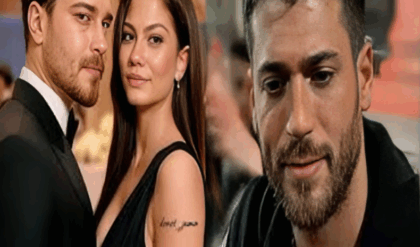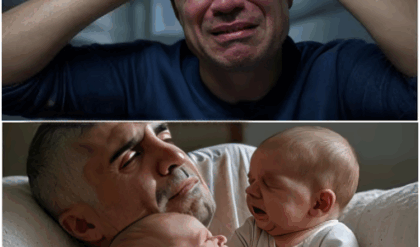BANG!
You don’t see the car crash that killed Princess Diana in the new and final series of “The Crown.”
But you hear it.
The opening sequence shows a black Mercedes speeding past a Frenchman walking his dog down into the Pont de l’Alma tunnel in Paris, before viewers hear a loud smash.
Seconds later, pursuing paparazzi on motorbikes screech to a halt, and some of them shamefully race to take photographs of the smoldering wreckage rather than help those trapped inside.
Watching this brief but intense scene brought back incredibly vivid memories for me.
I was editor of the Daily Mirror at the time, and this was to rapidly become the biggest and most stressful news story of my entire career running newspapers.
It was also a personally very emotional one because in the last 18 months of Diana’s life, we’d developed a surprisingly friendly relationship and I’d seen at first hand what a mesmerizing, magical, mercurial, and sometimes maddening character she was.
Her sudden, tragic death at just 36 shocked the world, and the public pathway to that accident can be charted back to a phone call I made to Harrods tycoon Mohamed al-Fayed on August 6, just three and half weeks earlier.
My royal correspondent James Whitaker had got wind from an impeccable source that Fayed’s son Dodi was secretly romancing Diana on the family yacht in St. Tropez.

Princess Diana’s car crash is heard but not seen in the final season of “The Crown.”Netflix
If true, it was a sensational scoop.
I knew Fayed well, so I called him.
For a few minutes, he vehemently denied it, but when I told him we knew it was true and were going to publish the story, he sighed and confirmed: “It’s very early stages, Piers, but they seem very happy and are getting on very well.”
When I asked if he was worried about an adverse reaction to the romance — Fayed was a controversial figure at loggerheads with the British government over its refusal to give him a UK passport — he replied: “No, it’s a simple case of two people falling in love, and if people don’t like that, they can go to hell!”
Then Fayed reminded me: “I hope it works out for them. Diana’s father, Johnny Spencer, was a good friend of mine, and we would meet twice a week for tea or lunch. Shortly before he died, he asked me to keep an eye on his family, so I have tried to do this.”

Dodi Fayed was secretly romancing Diana on the family yacht in St. Tropez.AP
I knew this was true because Raine Spencer, Johnny’s widow and Diana’s stepmother, told me the same thing.
Yet none of this part of the story is recounted in “The Crown.”
Instead, Fayed is portrayed as a nasty piece of work ruthlessly setting up the couple as part of his war on the establishment, even tipping off a top Italian photographer named Mario Brenna to secretly snap the couple on the boat without Diana’s knowledge.
But that bit isn’t true either.
I know, because our sister paper the Sunday Mirror bought the photos and splashed them its front page three days after we broke the initial scoop.
The picture deal was brokered by another photographer named Jason Fraser, who later revealed he’d been tipped off by Diana herself — as he had been many times before — to come and photograph her on the yacht.
The real version matters because throughout this final season, “The Crown” casts Diana as a saintly figure being cynically exploited by both the Fayeds and the media.
And frankly, as with the scenes where Dodi supposedly proposes marriage to Diana but is rejected, I think that’s a load of nonsense.
When it came to exploiting her love life and the media, Diana was a master manipulator.
I know because several times, she framed me up like the proverbial painting.
We first met in January 1996 at a charity event at the Savoy Hotel.
“Ah,” she said, mockingly, “the man who knows me so well.”
The sarcasm dripped from her regal lips like thick treacle.
“Thank you, ma’am,” I replied, “I like to think so.”

Diana was actually the tipster who led photographers to the yacht.WireImage
She wasn’t sure if I was being serious, so she made her position clearer:
“Honestly, you editors always think you know everything about me when we haven’t even met.”
“Well, now’s your chance to enlighten me, Your Royal Highness,” I laughed.
She eyed me up and down. “Hmm … I don’t have the time, I’m afraid…”
Then she giggled. “Or the inclination, come to that!”
But it turned out she DID have the inclination, because a few months later, I got an invite to have a private lunch with her at Kensington Palace.
It was one of the most surreal meals of my life, because Prince William, just 13, joined us, and the food was served by her infamous butler Paul Burrell.
For two hours, she enlightened me about everything, and I mean EVERYTHING.
She talked about her lovers — prompting William to say he kept a photo of Will Carling’s then-wife, Julia, on a dartboard! — and had “never laughed so hysterically” as when, after James Hewitt spilled the beans about their affair in a tawdry book, I hired a white horse, which a Mirror reporter, in full armor, rode to Hewitt’s home to charge him with treason for sleeping with the wife of a future king.
But while she was excited for her future, she was also feeling vulnerable and overexposed.
“Oh, God,” she said, “even I have had enough of Diana now, and I AM Diana. It’s been ridiculous recently, just one thing after another. But I can’t stop the press writing about me, can I? You are hardly going to say ‘Oh, OK then, we’ll leave you alone.’ I would like to have a good break.”
“Do you ever think of emigrating to escape all the attention?” I asked.
“Yes, but to where?” she replied. “I’ve thought about it often, but somebody would find me wherever I went.”
And then I saw a flash of real sadness in her face, a desperation almost, to have her anonymity back, but knowing it was gone forever.
“I am under so much pressure all the time. People don’t know what it’s like to be in the public eye, they really don’t. People shout out things like, ‘Eh, Di, I know what you’re going through, luv,’ and I laugh and think, ‘If only you really knew.’ He’s worrying about his allotment or whatever and I’ve got things like the future of the monarchy on my mind.”

“The Crown” depicts Harrods tycoon Mohamed al-Fayed as a nasty piece of work, which is largely a fictitious depiction, Morgan writes.Netflix
After that lunch, I agreed that I’d let Diana know whenever we had a particularly sensitive story about her.
But she didn’t play quite as fair in return.
In May 1997, three months before she died, we got offered a story that she had gone to the Priory Clinic in London and given an inspiring speech to young women suffering from eating disorders.
I let Diana know, and she gave me an hour-long off-the-record interview on the phone about exactly what she’d said, and all her own experiences with bulimia and anorexia.
It was an incredibly powerful conversation, and she knew I was taping it.
She later signed off on every page of copy, and every headline, and thanked me for being so responsible.

Piers Morgan was editor of the Daily Mirror at the time of Diana’s death.Piers Morgan
Then, at 9 a.m. the next day, as the world disseminated my massive scoop, she issued a furious statement condemning the “sensationalized” publication of “private conversations” from her visit to the Priory.
I phoned her office to say I was going to reveal my source — HER! — by putting our interview on a phone-line.
But, as I could hear her whispering noisily in the background, her comptroller Michael Gibbins told me: “Oh, the Princess doesn’t think you’ll do anything like that now you’re getting on so well…”
That was life on Planet Diana: a crazy, contrary, bonkers ride.
A few weeks later, all hell broke loose after William invited his nanny, Tiggy Legge-Bourke, rather than his warring parents, down to the annual open day at Eton College, and she was pictured smoking and guzzling champagne.
Gibbins, at Diana’s behest, called me and various other editors to brief how “deeply hurt and angry” she was about Tiggy’s “idiotic behavior.”
The next day, we all splashed on her rage, only for Diana to issue a statement insisting she was thrilled that Tiggy had gone and blaming “an employee in the office” for speaking without her consent.
This was a total lie and a horrible betrayal of Gibbins, who was a very decent man.

Diana threw her comptroller Michael Gibbins under the bus for criticism published about William’s nanny, Tiggy Legge-Bourke.David Hartley/Shutterstock
So, although I loved her for many reasons — she was dazzlingly beautiful and fabulously charismatic, as actress Elizabeth Debicki captures so well with her brilliant depiction of her — Diana also had a very unpleasant and duplicitous streak that is never shown in “The Crown.”
She also knew exactly how to use the media to suit her agenda.
When Charles threw a 50th birthday bash for Camilla while Diana was holidaying with the Fayeds that fateful summer, Mohamed called me from his villa early in morning on the eve of the party to ask if our photographer would be near the beach at 9 a.m.
Again, I could hear Diana in the background, issuing instructions to him.
I said he would, and at 9 a.m. sharp, she came on the beach in a leopardskin bikini and began doing cartwheels.
It was very funny, but also very clever — guaranteeing the next day’s front pages would be full of these pictures on Camilla’s big birthday.
I’ve always wondered how much William and Harry knew about their mother’s regular collusion with tabloid editors and photographers.
All of this is worth remembering when you watch this season of “The Crown,” because none of it is included.
Instead, the British press is portrayed as a bunch of heartless scumbags, the Fayeds as devilish villains, and the Queen, shamefully, as a miserable, humorless, out-of-touch old crone, when in fact Diana herself told me how kind and empathetic she had been to her throughout the breakup of her marriage.
And I can personally attest to the Queen’s penchant for a good laugh.
“Do you enjoy hosting your garden parties?” I once asked her at a Windsor Castle party 2002 as we looked out over the magnificently tended green fields.
“Well, Mr. Morgan,” she replied, “let me put it this way: How would YOU like 12,000 complete strangers trampling on YOUR lawn?”
Then she burst out laughing.




 , eşi Burak onu hemen hastaneye götürdü
, eşi Burak onu hemen hastaneye götürdü 
 .
.



